
History
Explore Latinx
and Indigenous Conservation History
Honoring the lived experiences and ancestral wisdom of Indigenous and Latine communities
Honoring the lived experiences and ancestral wisdom of Indigenous and Latine communities
While often overlooked and misrepresented, conservation history in Indigenous and Latine environments within the U.S. goes back decades. It’s time to explore and understand these real lived experiences to enact much-needed change.
Our history in the West is deeply tied to the special places around us. Often overlooked and erroneously branded as a growing phenomenon, Latine environmental leadership instead goes back decades. Starting with the lawsuit on behalf of farmworkers that ultimately resulted in the banning of the insecticide DDT, our role in the conservation movement is one that we seek to highlight and honor. This timeline, while done to the best of our abilities with the help of collaborators and colleagues, is but a starting point to this history. With your help, we look forward to making this as inclusive as possible.
We hope to expand snapshots of our history beyond the West, and beyond just Latine communities. This represents a starting point in sharing more of the legacy of our communities in movement building. If you have any information, facts, historias, or pictures you’d like to include, please reach out via our contact form!
Decade
Conservation History Timeline
Conservation History Timeline
Pre-1900s
Indigenous peoples and stewardship
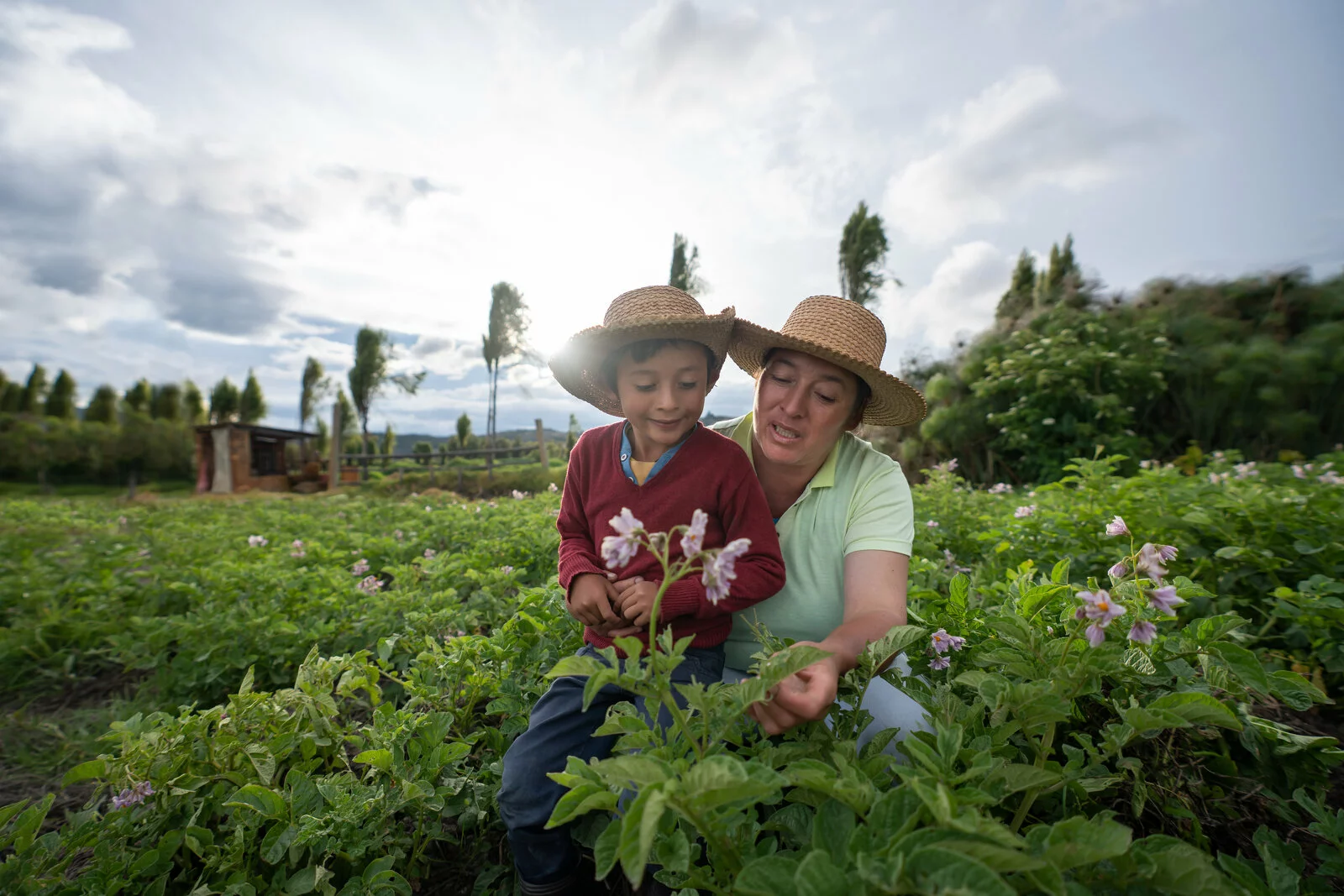
Indigenous peoples across the Americas have practiced conservation and sustainable land management for thousands of years, relying on traditional ecological knowledge to steward the land.
Latine communities, especially those with Indigenous ancestry, have similarly maintained connections to the land through cultural practices and agricultural traditions.
1900s
Early conservation efforts and displacement of Indigenous peoples
Early conservation efforts in the United States, such as the establishment of national parks, often involved the displacement of Indigenous peoples from their ancestral lands without adequate recognition or consultation.
Latine communities, particularly those engaged in agricultural work, began to play a significant role in shaping rural landscapes and contributing to the nation’s agricultural economy.
1910 & 1920s
Continued marginalization of Indigenous communities
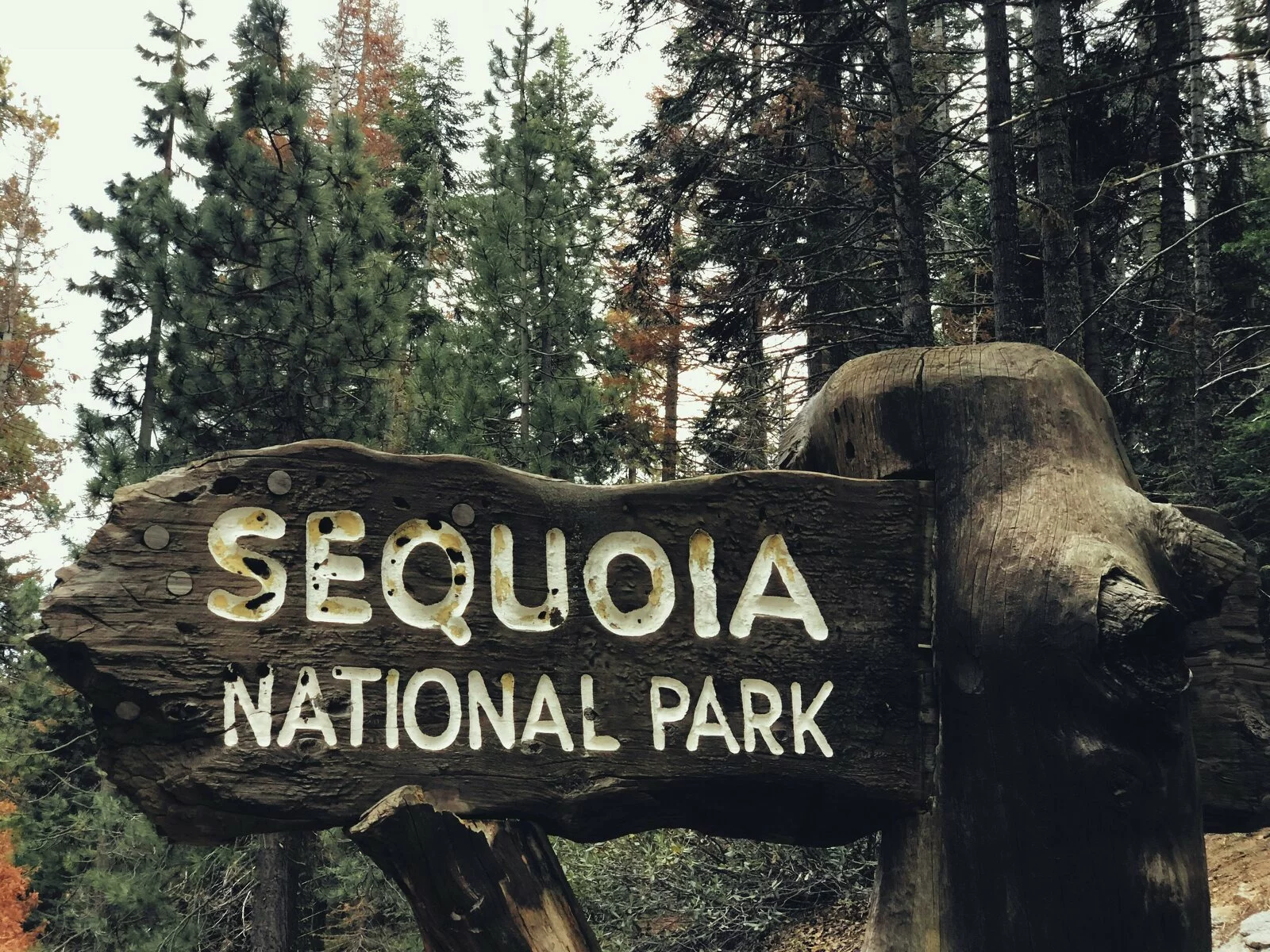
The establishment of the National Park Service in 1916 marked a significant milestone in conservation history, but it also led to the continued marginalization and displacement of Indigenous communities from their traditional territories.
Latine migrant labor became increasingly vital to the agricultural industry, with workers often facing exploitation and labor abuses.
1930 & 1940s
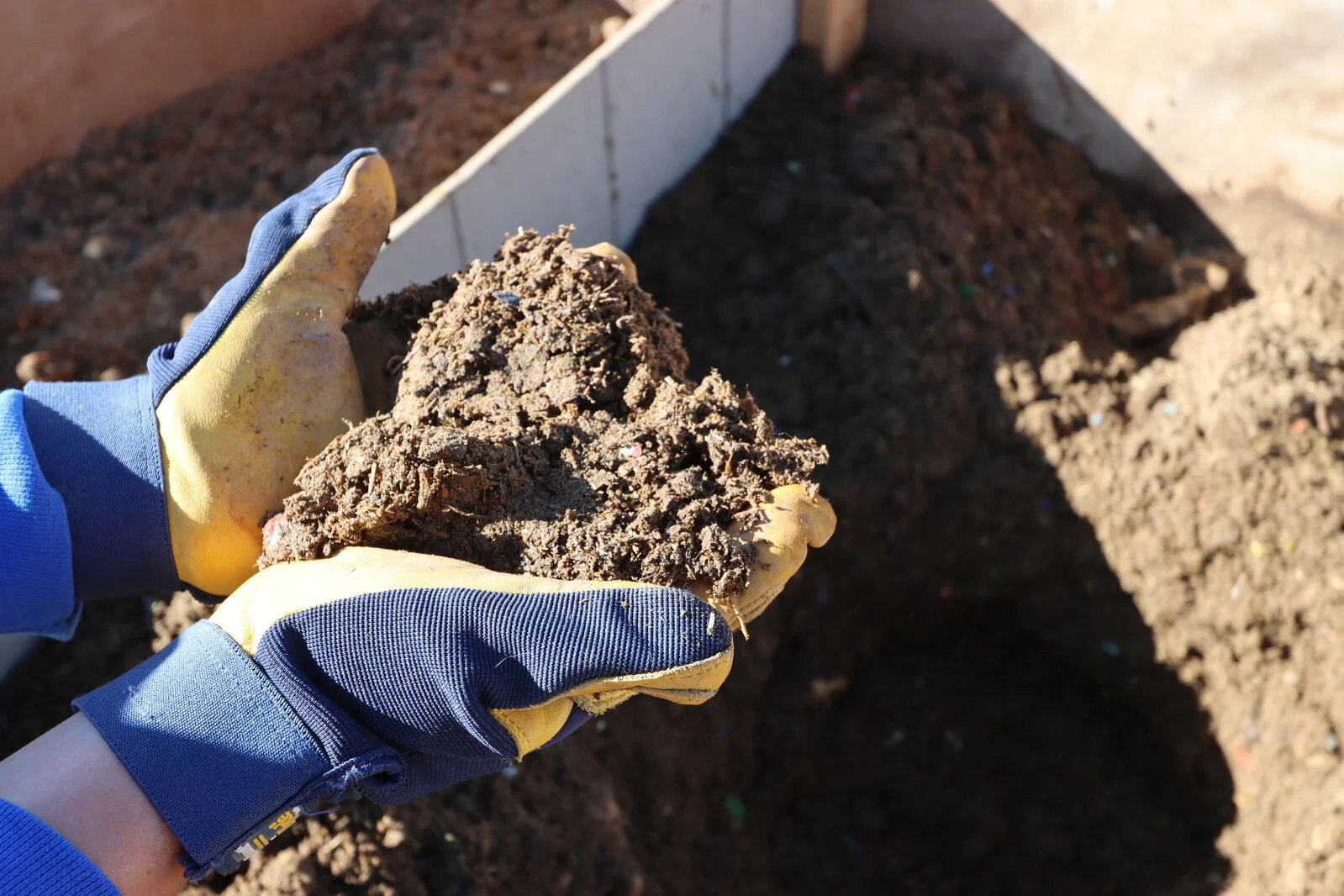
The Dust Bowl of the 1930s highlighted the importance of soil conservation and led to the implementation of conservation programs, such as the Civilian Conservation Corps (CCC), which employed many Latine workers.
Indigenous peoples continued to face challenges to their land rights and sovereignty, particularly as federal policies aimed to assimilate Native Americans into mainstream American society.
1950 & 1960s
Environmental movement of the 1960s
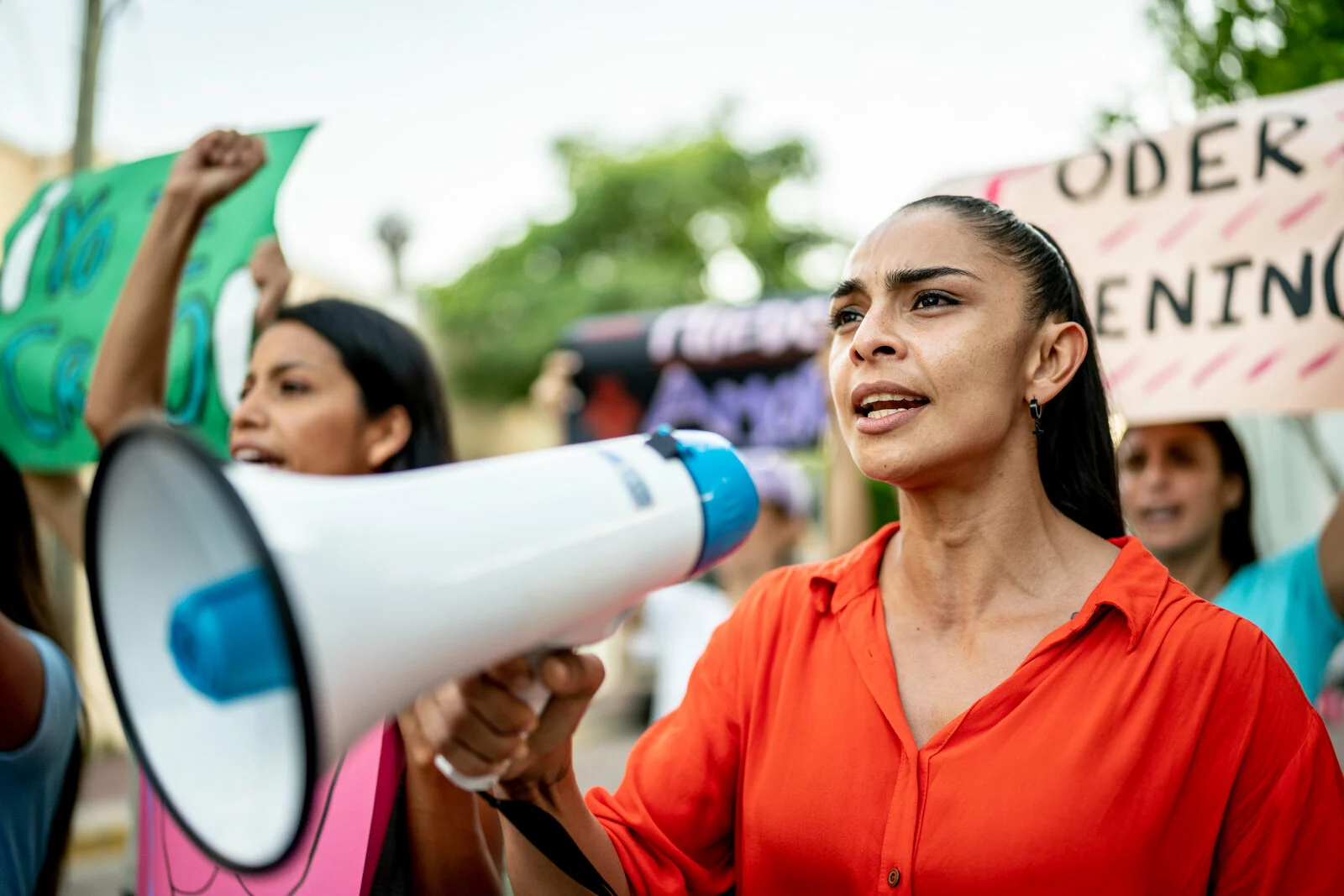
The emergence of the environmental movement in the 1960s brought attention to issues of conservation and environmental justice, though Indigenous and Latine voices were often marginalized within the movement.
Latine civil rights movements, such as the Chicano movement, highlighted the connection between environmental justice and social justice, advocating for the rights of farmworkers and marginalized communities.
1969
- Ralph Abascal of the California Rural Legal Assistance files suit on behalf of six migrant farm workers that ultimately resulted in ban of the pesticide DDT.
1970s
Rise of environmental justice
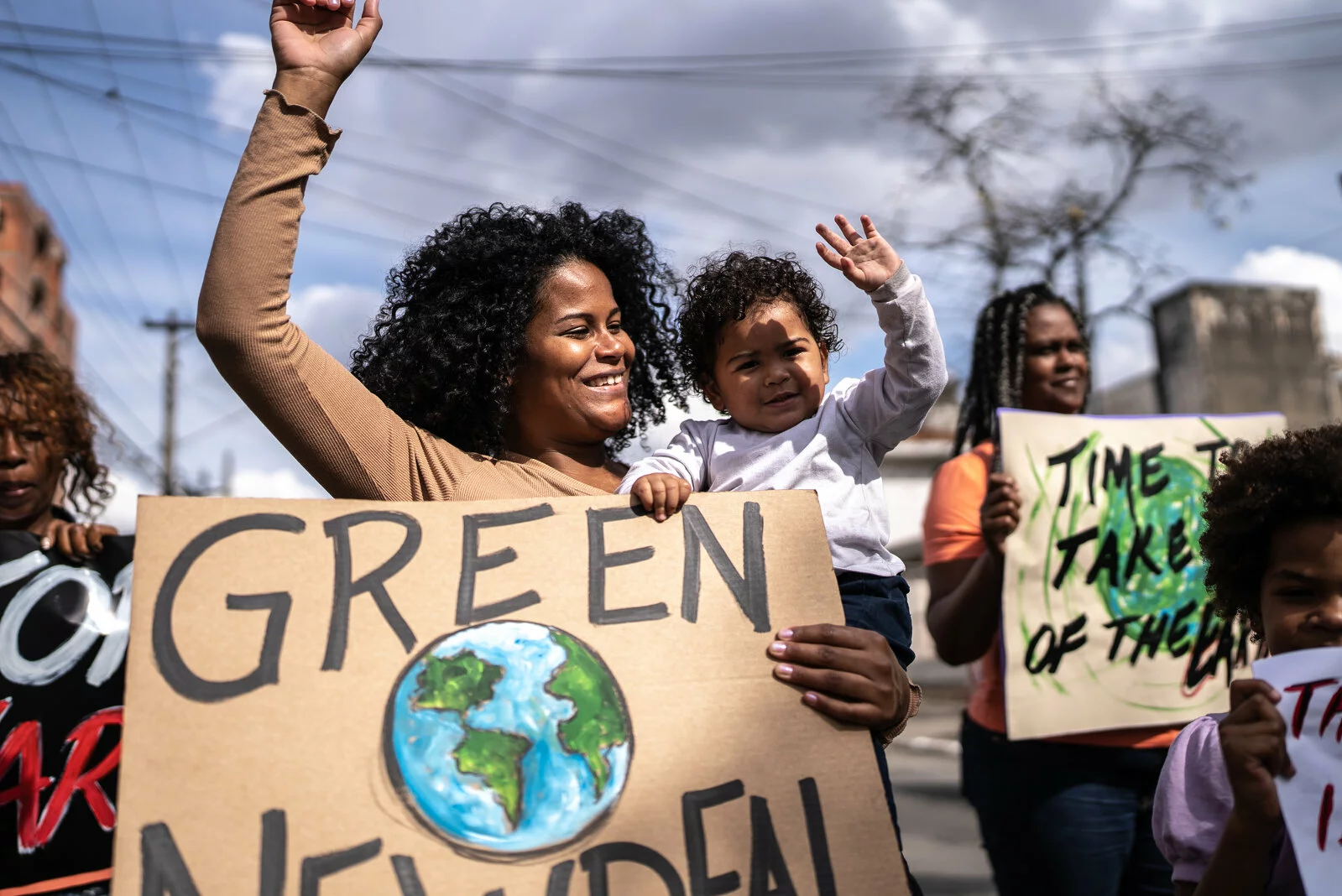
The rise of the environmental justice movement in the 1970s and 1980s drew attention to the disproportionate environmental burdens faced by Indigenous and Latine communities, such as exposure to pollution and lack of access to clean water.
Indigenous tribes began asserting their sovereignty and pursuing greater control over natural resources through initiatives like Tribal land management and conservation programs.
1970
- Local residents formed Concerned Citizens of Questa, New Mexico, to tackle Molycorp issues, ranging from unfair hiring practices to tailings spills, contaminated groundwater and toxic dust. In a story familiar to activists all over the West, the Questa group in the largely low-income Latine community lacked the money and technical and legal resources to take on a multibillion-dollar corporation.
1980
Continued rise of environmental justice movements
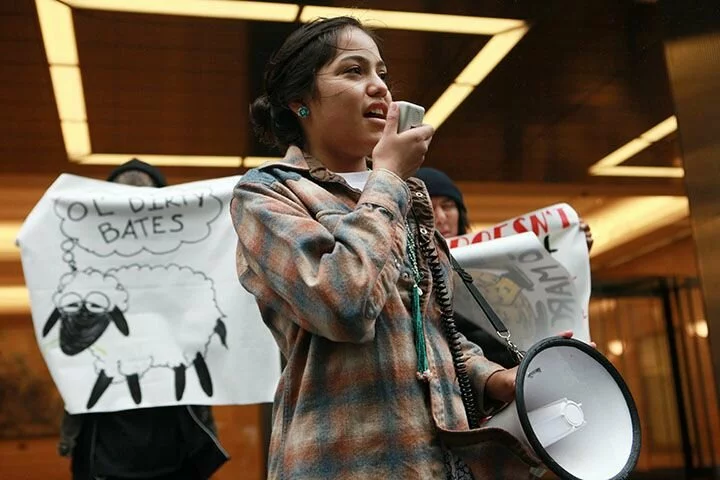
- Environmental Health Coalition (EHC) is founded in San Diego, CA.
1981
Continued rise of environmental justice movements
- The Southwest Organizing Project (SWOP) is founded by community activists in New Mexico to build a strong grassroots organization in the Southwest to fight for environmental and social justice. Eventually, these parties will sign the first-ever agreement by grassroots organizations and the military on environmental oversight. SWOP organizes with community residents to develop its Community Environmental Bill of Rights, which lays out basic principles for environmental justice.
1982
Continued rise of environmental justice movements
- The Tonantzin Land Institute was founded in New Mexico to “serve as an advocacy organization defending the land, water, and human rights of traditional communities in the Southwest.”
1985
Continued rise of environmental justice movements
- William C. Velasquez Institute is chartered.
- Concerned Citizens for South Central Los Angeles is founded
- Citizens Against Contamination is founded in Commerce City, CO, “to ensure a safe, complete cleanup of the Rocky Mountain Arsenal.”
1986
Continued rise of environmental justice movements
- Mothers of East LA (MELA) is founded.
1987
Continued rise of environmental justice movements
- The 55 Community Acequias in the Taos Valley organized the Taos Valley Acequia Association in New Mexico. The Primary objective of the association is to protect the water rights of the Taos Valley irrigators with water rights off the Rio Grande del Rancho, Rio Chiquito, Rio Fernando, Rio Pueblo, Rio Lucero, Arroyo Seco, and Rio Hondo stream systems.
- “Toxic Wastes and Race in the U.S.” The Commission for Racial Justice of the United Church of Christ published a report “Toxic Wastes and Race in the U.S.,” showing that race, even more than income level, is the crucial factor shared by communities exposed to toxic waste.
- El Pueblo para El Aire y Agua Limpio (People for Clean Air and Water) is founded in Kettleman City, CA.
- Latino Issues Forum is founded, providing initial policy work for Latine communities and the environment in California.
1988
Continued rise of environmental justice movements
- Costilla County Committee for Environmental Soundness is founded in Colorado.
- Mothers of East L.A. (MELA) and Concerned Citizens of South Central Los Angeles (CCSCLA) defeat the construction of a huge toxic waste incinerator in their community. South Central and East L.A., devastated by plant closures, are now sites for “economic development” projects like the Los Angeles City Energy Recovery (LANCER) plant, prisons, and toxic incinerators. MELA successfully combats construction of a $29 million incinerator designed to burn 125,000 pounds of toxic waste per day. South Central fights the LANCER project and wins, even after land had been taken by eminent domain and bonds had been sold for the project. These community organizations become part of a national movement for Environmental Justice.
- Regeneracion Del Norte is founded in Questa, NM, “for development of rural north central New Mexico in a non-extractive non-exploitative manner in harmony with the environment.”
1989
Continued rise of environmental justice movements
- Luke Cole and ally Ralph Abascal of California Rural Legal Assistance found the Center on Race, Poverty, & the Environment (CRPE). Ralph was a noted legal advocate for farmworkers and class reform and had taken part in a legal battle that led to banning the pesticide DDT in the 1970s. CRPE became a project of the California Rural Legal Assistance Foundation in 1996 and an independent organization in 2004.
1990s
Continued advocacy
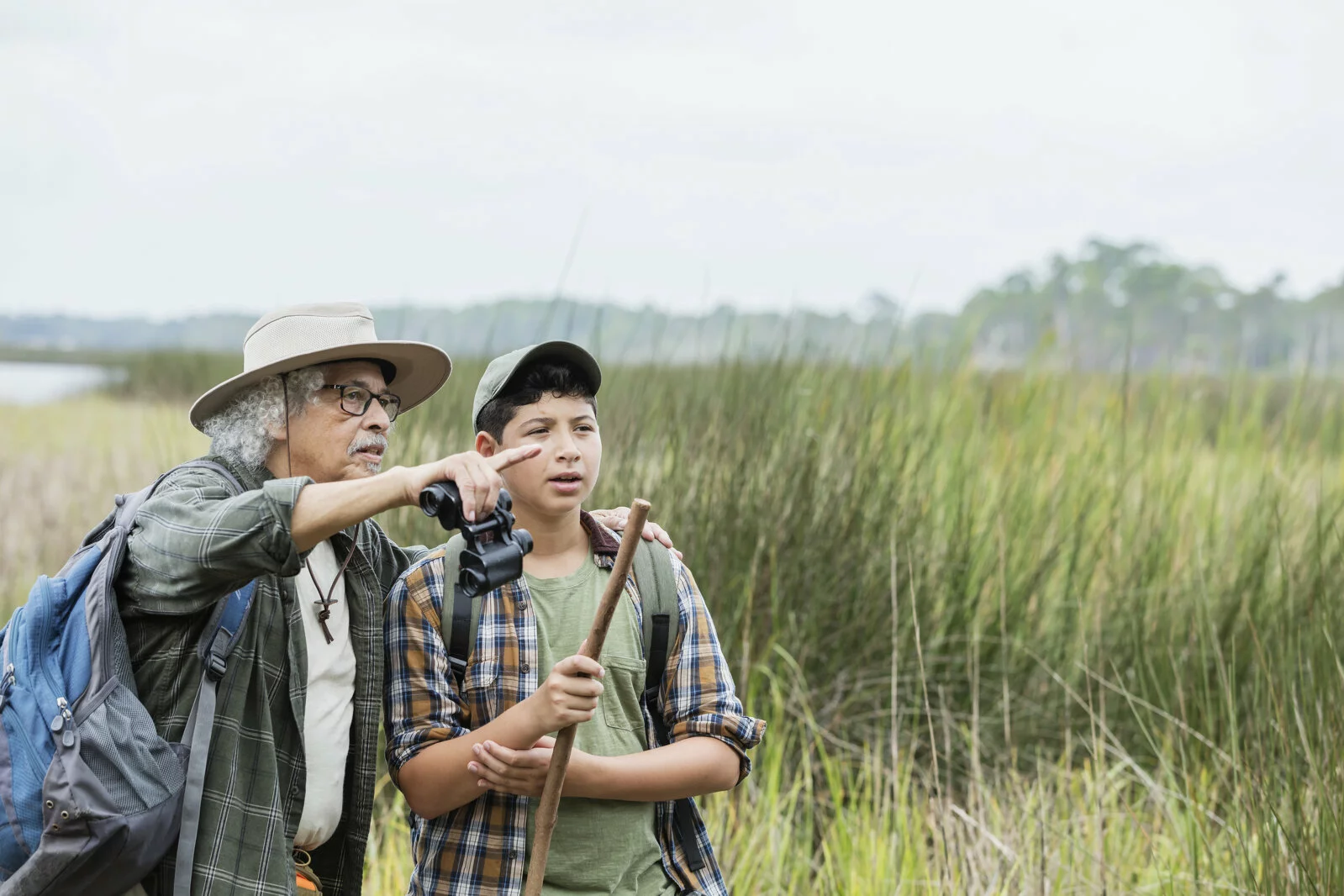
Indigenous-led conservation efforts, such as the creation of Tribal parks and conservation partnerships, gain momentum, emphasizing the importance of traditional ecological knowledge in conservation practices.
Latine organizations and activists continue to advocate for environmental justice and the recognition of Latine contributions to conservation and sustainable land management.
Despite progress, both Latine and Indigenous communities continue to face challenges related to land rights, environmental justice, and representation in conservation efforts.
1990
Continued advocacy
- The Southwest Network for Environmental and Economic Justice (SNEEJ) is established.
- The “Big 10” Letter: Nine activists of color write a letter to the “Group of 10” national environmental organizations, calling on them to be in dialogue with activists of color on the environmental crisis impacting communities of color and to hire people of color on their staffs and boards of directors. A second letter was sent to the Big 10, this time signed by 103 activists of color representing grassroots, labor, youth, church, civil-rights advocates, and social-justice coalitions in the Southwest. The letter reinforces the first letter, challenging mainstream environmentalists on issues of environmental racism and lack of accountability toward Third World Communities in the Southwest.
- Southwest Regional Activist People of Color dialogue on environmental- and economic-Justice Issues. The Southwest Organizing Project (SWOP) convenes over 80 representatives from 32 organizations working on environmental- and economic-justice issues in the southwest. From these efforts, the Indigenous Environmental Network (IEN) is established.
- Gente Y Ambiente is founded in New Mexico “to advocate and organize on behalf of ‘people’ – To remind the world that the poor, disenfranchised Native Americans and Chicanos are part of the environment.”
1991
Continued advocacy
- People Organizing To Demand Environmental Rights (PODER) is founded in San Francisco, CA
- The First National People of Color Environmental Leadership Summit meets in Washington, D.C., and creates the “Principles of Environmental Justice.”
- Lawsuit filed by California Rural Legal Assistance (CRLA) and CRPE on behalf of the community coalition El Pueblo Para el Aire y Agua Limpio (Kettleman City, CA) formally states that the permit process for the Kettleman waste disposal facility violated the civil rights of residents, as meetings, hearings, and technical information were given only in English. In El Pueblo para el Aire y Agua Limpio v. County of Kings, the judge rules that the permit process for the toxic waste incinerator was flawed because of their failure to translate documents into Spanish. It therefore meant the affected public was not “meaningfully involved” in the environmental review, in the case brought by Center on Race, Poverty & the Environment.
1992
Continued advocacy
- Two babies are born with neural tube birth defects to mothers from Buttonwillow, CA. The occurrence of two cases in one year creates a rate twenty-five times higher than expected for Kern County, according to the California Birth Defects Monitoring Program (CBDMP). Area residents suspect that the Laidlaw facility (the operator at the time) was responsible for the defects and attempt to force the dump’s closure through community participation in the permitting and permit appeals processes. The Center on Race, Poverty & the Environment (CRPE) represents the Padres Hacia una Vida Mejor (a Buttonwillow community activist group) in a series of civil litigations that eventually force Safety-Kleen to stop accepting radioactive waste that it had been illegally accepting from the U.S. Army Corps of Engineers, from remediation of a former Manhattan Project production facility in upstate New York, but are unable to close the dump, which has since expanded.
1993
Continued advocacy
- Predominantly Latino residents of Kettleman City, CA, succeed in preventing siting of a toxic-waste facility in their community.
- The Farmworker Network for Economic and Environmental Justice (FNEEJ) is formed to support the struggle of more than 50,000 workers in nine independent farmworker organizations.
1994
Continued Advocacy
- The Playas de Tijuana community — after a great deal of organizing — is able to defeat the Waste Management Incinerator, with help from the organization El Pueblo y Agua Limpia from Kettleman City, CA, Environmental Health Coalition, and SNEEJ.
1995
Continued advocacy
- The Environmental Justice Fund is founded by six networks to promote the creation of alternative funding strategies to support grassroots EJ organizing. The six networks include: Asian Pacific Environmental Network, Southwest Network for Environmental and Economic Justice, Indigenous Environmental Network, Farmworker Network for Economic and Environmental Justice, Southern Organizing Committee for Economic and Social Justice, and the Northeast Environmental Justice Network.
1996
Continued Advocacy
- Little Village Environmental Justice Organization (LEJO) is founded in Chicago.
1997
Continued advocacy
- The Rio Grande Institute is founded in Texas to focus on projects on the Rio Grande border.
- The National Hispanic Environmental Council is founded. “NHEC is a policy, programmatic, and advocacy organization working to ensure that Latinos have a voice, and a seat, at the national environmental decision-making table, whether before federal agencies, the White House, Congress, major green groups, or others.”
1999
Continued advocacy
- U.S. Representative Hilda Solis, then a senator in the California legislature, introduces landmark environmental justice legislation in California establishing a working definition for and requiring the California EPA to develop a mission, policy, and guidance on environmental justice.
- The Wilbur-Ellis Company fumigates a 75-acre potato field near Earlimart, CA, with metam sodium — which drifts as a toxic cloud into nearby homes, forcing 180 residents to evacuate. Exposed Earlimart residents experience nausea, vomiting, headaches, burning eyes, and shortness of breath. In a sequence of local emergency response failures, residents’ distressed phone calls are initially dismissed, and poisoned residents are subject to a humiliating and ineffectual decontamination attempt at a local football field. An investigation by the California Department of Pesticide Regulation and the Tulare County Agricultural Commissioner’s Office conclude that Wilbur-Ellis failed to take appropriate safeguards to prevent the fumes from drifting. In direct response to the incident, Earlimart resident Teresa de Anda forms El Comite Para el Bienestar de Earlimart to help educate and advocate for Earlimart about pesticide drift. She is instrumental in the passage in 2004 of SB 391, the Pesticide Drift Exposure Response Act, which sets out improved procedures for pesticide drift response and financial responsibility for the medical bills of victims of pesticide exposure.
- Justicia Ambiental Latina is founded in New York City to “secure and defend all fundamental rights of Latinos living and working in New York City — to live in a clean, healthy, and safe environment.”
2000

- Westside Stanislaus residents, Grayson Neighborhood Council (GNC), and Greenaction successfully defeat plans to ship in and burn toxic medical waste at the Covanta incinerator. The Grayson Neighborhood Council (GNC) is a community and environmental justice group working to assist the Westside residents of Stanislaus County to defend themselves from disproportionate and discriminatory pollution threats, including attempts to operate and site noxious facilities in their midst. GNC works toward the closure and remediation of existing toxic facilities and sites that threaten Westside residents’ health.
- Robert García starts The City Project in Los Angeles, CA, and moves it to the Center for Law in the Public Interest. The City Project later spun off in 2006 when the Center closed.
2001
- The Central California Environmental Justice Network holds its first environmental justice conference in Fresno in California’s Central Valley.
- League of Conservation Voters Educational Fund conducts polling on California Latino voter attitudes on the environment. It updates the poll in 2012.
2002
- Latinos and the Environment Conference is organized by the University of Michigan’s School of Natural Resources and Environment’s Environmental Justice Initiative.
2004
- The William C. Velasquez Institute (WCVI) begins focus and development of case studies for successful urban greening and parks, climate-change adaptation, water infrastructure, and green-energy development in Los Angeles and San Antonio.
- Mujeres De La Tierra is founded, organizing women in Southern California to fight for cleaner, healthier neighborhoods for their families.
- The Los Angeles, CA, Harbor Hispanic Environmental Justice organization, the Coalition for a Safe Environment, and San Pedro residents win a victory when the California South Coast Air Quality Management District Arbitration Board finds San Pedro Kinder Morgan Fuel Storage Tank PCB Landfill Facility guilty of not negotiating in good faith and cancels their permit to conduct future business permanently.
- Natural Resources Defense Council (NRDC) creates its program on Latine outreach and advocacy and publishes the report “Hidden Dangers: Environmental Health Threats in the Latino Community”.
2005
- Citizens for Environmental Justice in Corpus Christi, TX, receives the Congressional Hispanic Caucus Institute Award for Outstanding Achievements in Environmental Justice.
2006
- The 32-acre Los Angeles State Historic Park at the Cornfield opens in September 2006 after the community stops a proposal to build warehouses by the City of Los Angeles and wealthy developers in the last vast open space in downtown Los Angeles. This is a flagship project of The City Project.
2007
- The two-square mile Baldwin Hills Park, in the historic African American heart of Los Angeles, is the largest urban park designed in the U.S. in over a century. The community’s work defeats efforts to site a power plant and garbage dump there. It is now predominantly visited by Latine community members. Mujeres de la Tierra is a key community partner.
2008
- Sierra Club Poll releases the first of several polls “showing Hispanic Voters Concerned about Global Warming and Energy. It updates the poll in 2012 with support of The National Council of La Raza. This would be later followed up by other polls from League of Conservation Voters, Latino Decisions, and other conservation organizations.
2011
Present Day

- First Earth Day Latino in Los Angeles, CA, is held.
- Secretary of the Interior, Ken Salazar, establishes the mission of the American Latino Heritage Fund (ALHF) to assist the National Park Service and communities across the country to ensure that our national parks and historic sites preserve, reflect, and engage the diverse stories and communities of American Latinos throughout American history and for future generations.
- Azul is founded in California
- The City Project publishes the environmental justice and public health report, “Healthy Parks, Schools, and Communities,” documenting disparities in green access, physical activity, and health in nine counties of Southern California and presenting recommendations for change.
2012
Present day
President Barack Obama dedicates the César Chávez National Monument, stating, “Our world is a better place because César Chávez decided to change it.” This is the first national monument dedicated to a Latino born after the 1700s, according to the National Park Service.
2013
Present day
- Kimberly Wasserman Nieto of the Little Village Environmental Justice Organization (LVEJO) wins the Goldman Prize for her collaborative work with her allies for shutting down the Fisk and Crawford coal plants in Chicago.
- Latino Outdoors is founded in California
- Green Latinos is founded in Washington, D.C.
- The first Americas Latino Eco Festival (ALEF) is founded and hosted in Colorado.
2014
Present day
- Hispanics Enjoying Camping, Hunting, and the Outdoors (HECHO) is founded in New Mexico.
- California Latino Environmental Advocacy Network (CLEAN) is founded in Southern California.